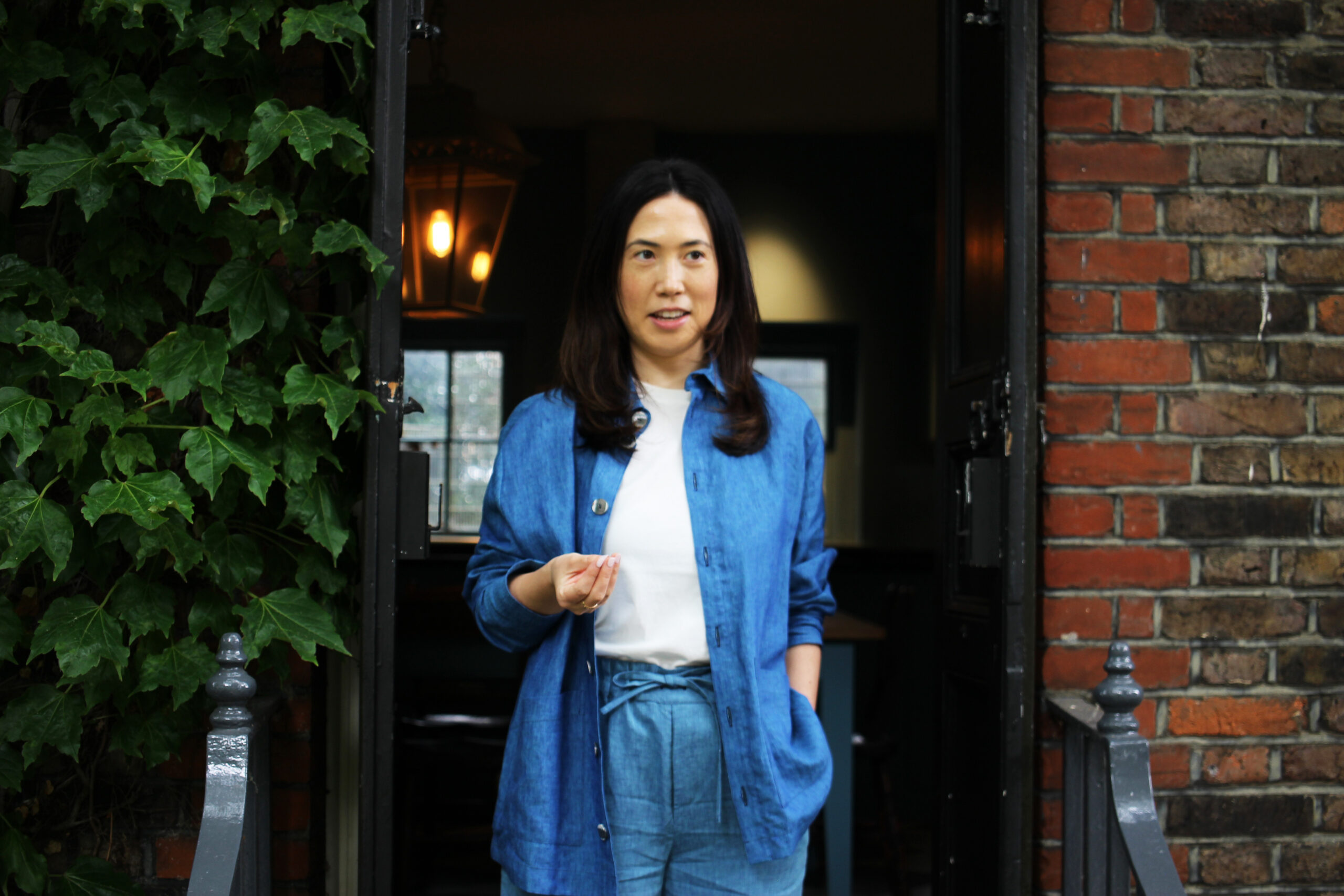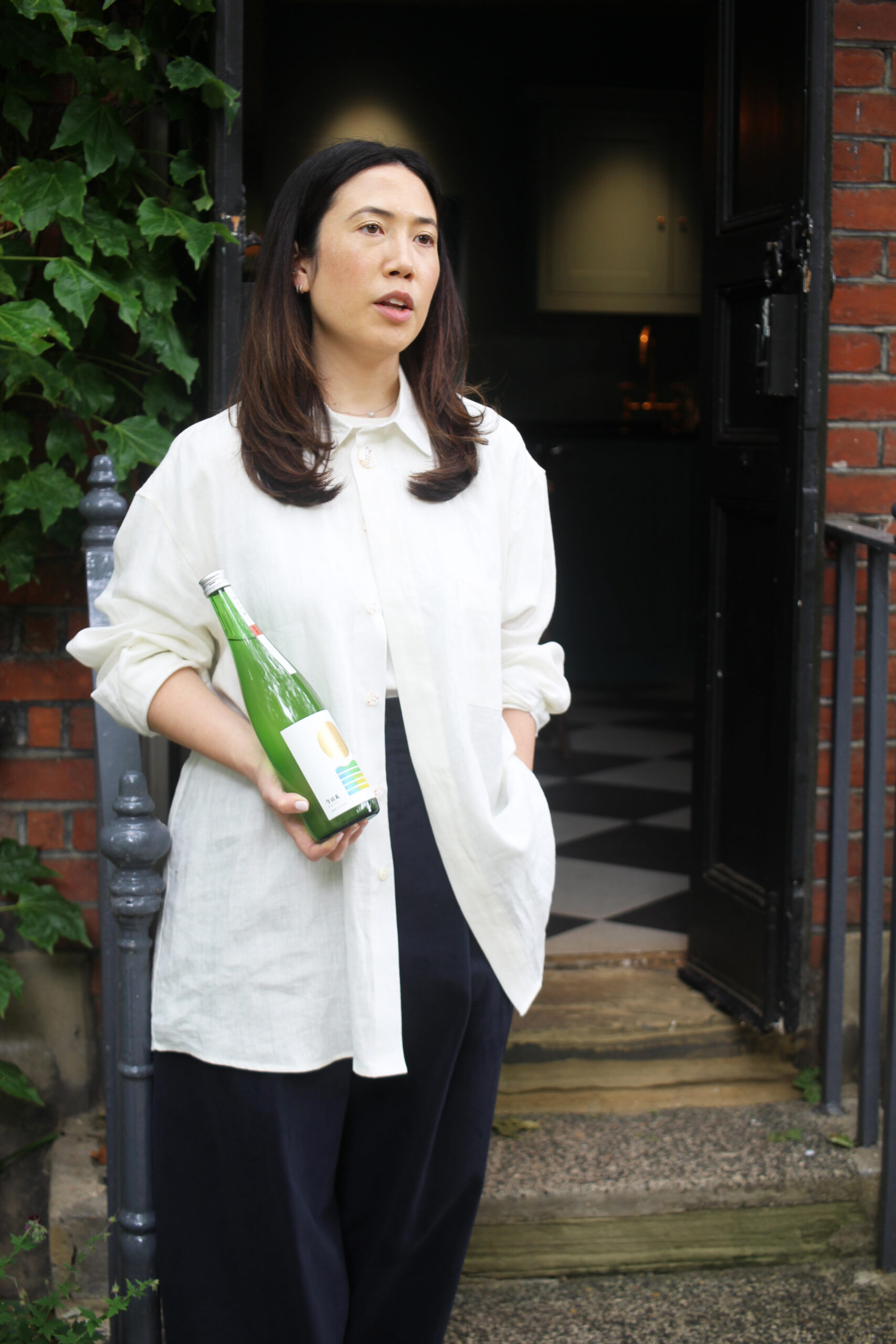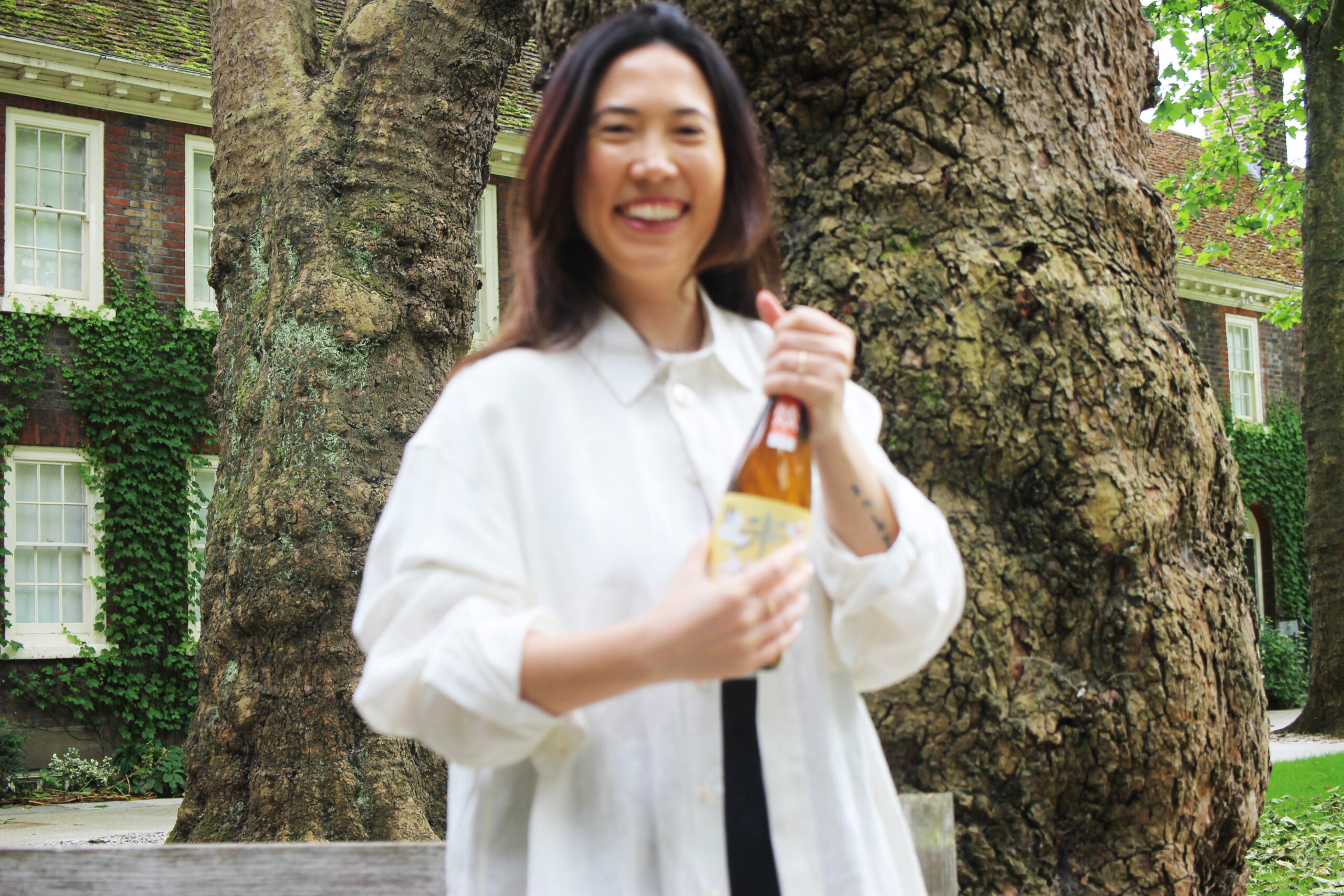ERIKA HAIGH, SAKE EDUCATOR

Erika is first and foremost a sake educator, dedicated to spotlighting the intricacies of Japanese drinking culture. Born and raised in Japan, her professional and personal trajectory has taken her around the world. Now living in London, Erika is an international kikisake-shi sommelier (SSI). And the founder of new platform mai, which launched in February 2024 and showcases the most premium and artisanal sake and Japanese drinks. Mai, which literally means ‘every’ in Japanese, is a boutique Japanese fine sake merchant, events platform and online bottle shop centred around Erika’s collection of Japanese fine sakes and drinks and aims to bring sake to everyone.
Erika is also the co-owner of MOTO; the UK’s first independent Japanese sake bar, shop and eatery. Alongside this, Erika is one of the committee members for the British sake association and she advises on specialist sake projects for companies in Japan and the UK. Erika hosts a number of sake events at The Museum of the Home, with many more events and collaborations to come.
Erika sat down with Paul at The Museum of the Home to talk sake over a glass or two…


Paul Missing (PM): How has the crossover with The Museum of the Home and your work come about?
Erika Haigh (EH): Well it started because one of my friends works here, and a while ago, she said ‘you do lots of events, you should use the space’, so that’s the origin, but when I began coming here, I realised that this place is all about connecting people by telling their origin stories and also, how what we do in the home ties cultures together, and I thought there was such a nice way to tie together how sake brings people together, and what I hope to do here in the UK, tying people together with shared interests, and telling stories about Japan. We then decided to make it a series of events and it’s gone from there.
PM: That makes sense. It’s such a beautiful and tranquil place, and completely hidden as the other side of the wall is the busy Kingsland Road.
EH: Oh yeah, and now there’s Vietnamese food here, there’s so much.
PM: Possibly one of London’s best Vietnamese restaurant is over there, Song Que, it’s so good.
EH: Oh yeah, and Bun Bun Bun too, there are so many options.
PM: And given you’ve set up shop in London for a while now, and your mission is to bring sake to the UK – what is it about the UK that is so appealing for that mission for you?
EH: I’ve been here a while now, I’ve got my Japanese and Canadian roots, but I love the diversity of London, and the sense of opportunity. In terms of sake it’s still not as caught up as the US or Australia, and of course places in Asia – their appreciation and knowledge of sake is far more advanced than the UK, but the UK has such a long history of being a wine trading nation. It has a great foundation for being able to allow sake to skyrocket if we push it in the right direction.
PM: I think the UK is more welcoming for cuisines to integrate. In the US Japanese food seems to be isolated to main cities.
Italy and Spain tend to stay very much within their boundaries.
EH: Absolutely. And rightfully so, but it definitely makes it harder to crack.

PM: Now, this might be an obvious question, but did your background as a wine sommelier influence your decision to start your business?
EH: 100%. But, I think I would have come across sake regardless, at some point, but how I decided to communicate what sake is to the UK audience, is very much influenced by my wine background. So, the tasting notes I use, my experience working as a wine sommelier, understanding what kind of questions people ask, what they usually ask for, these types of information, I transferred those into how I sell sake.
PM: So it is transferrable?
EH: Yeah, totally.
PM: And in my limited experience of Sake, they’ve all been of quite a savoury nature, which I really enjoy, but are there sakes that have a fruitier profile, more like wine?
EH: 100%
PM: And are they as frequently available? Because I think, previously, they might not have been?
EH: Yeah, so at the beginning people were bringing in these savoury, rustic styles that, in many places they were heating up to try to sell to you, so on and so forth… But, to be fair that was sake culture and history for the last, almost 2000 years in Japan. You know, there wasn’t the technology like there is now. There wasn’t refrigeration. But in the past 100 years or so, there are rice polishing machines that can polish rice down to 0.01% or the original rice grain. There’s of course refrigeration. There’s so much craftsmanship, skills and development that means they can now produce these really refined, really elegant, really fruity, aromatic styles. I think it’s good to have a plethora of different aromas, textures, flavours, and then allow the consumer to decide what they like and what they don’t like.
PM: Personally I see a similarity between Tequila and sake – the way, primarily, Tequila was pigeonholed as a course spirit lacking any finesse, but is now available worldwide on tasting menus – would you agree there might be a similarity in how sake has been seen previously?
EH: 100%, yeah. So I do think it was seen as this foreign drink from Japan – It’s like, “let’s up our sales at a Japanese restaurant by selling this drink, let’s bring in anything – usually something that hasn’t been brought in using the right method, without any refrigeration or anything, so it’s basically spoiled by the time it gets here, but let’s just sell it because it fits within this context of Japanese cuisine… It’s sushi night”, you know? Which has done horrible things for the sake industry. But now, we’re trying to make up for these bad stereotypes and misconceptions, so actually a lot of what I like to do with people who are having sake for the first time is ‘debunking sake myths’, because there is just so much misconception.
And I do think this is a similar trajectory for something like Tequila went through, which is, awful stuff introduced first, and then righting those wrongs, and finally introduce that, no it’s actually a delicious drink, a craft beverage, there’s so much to this world, let’s rediscover this beverage category.
PM: Totally. And is there a minimum time to brewing a really good sake? Is there a maximum window of opportunity? Does it appreciate with a longer time brewing?
EH: So, brewing time, if it’s the modern method, it’s around a month and a half. If it’s more of the traditional method it’s around 3 months. So that’s the purely brewing part, and it usually happens in the winter months, simply because the colder it is, the less bacteria and all these kinds of things. And then it’s usually matured for around 3-6 months in house, and then it goes off to the market.
Sake is a beverage that, when the brewer decides to release to the market, they want you to drink it. It’s not like wine where, you know, keep it in your cellar. Maybe it’s a Japanese thing, but they put it in the market when they want you to have it. So if it’s selling, the brewer believes this is in its optimum condition. If they’re going to mature or age the sake they will actually do that in house. If you’re a sake geek like me, then sometimes I come across bottles that I think ‘this would be really good if I aged it for two years or something, but then it’s always in a refrigerated condition, and I’m playing around with the evolution of texture, stuff like that.
There’s this really cool bar in Kyoto where the guy has actually aged stuff for like, a decade, so it’s stuff that even the brewers are very curious to go to his bar, because it’s evolved so much. So I love going to his bar, but he’s quite an anomaly. Usually, you’re not doing that kind of stuff, there isn’t a culture of ageing, and if there is aged sake, it’s aged in house.
PM: And how do the brewers feel about that? In the sense that it could possibly completely alter their product, yet it’s sold with their name… Or does he white label it?
EH: So this gentleman in particular, he’s got respect from the industry but it’s true that not everyone sells their products to him. But usually, I’m sure a lot of people, craftsmen, whether it’s clothing or whatever it is you’re making, you kind of give a piece of yourself into whatever you’re creating, it’s almost like a mirror into what you are thinking, your vision, whatever it maybe. And it feels the same for sake, you know, when I go to a brewery, I have relationships with these guys, I always make sure I go to the brewery before I sell it in England. A lot of the time the sake feels like their second son. It’s almost like children, it’s to that level that, as the consumer, or as the distributor or importer like myself, what I try to do is respect the product that these people wanted to make and try to maintain that as much as possible until it reaches the lips of the consumer. I always like to make that quite a big part of my responsibility, so that’s why I always secure refrigeration to here from Japan, the training of sommeliers and bartenders that stock my products – there’s so much lender loving care that goes into making these products, so why not try to respect that.
PM: I’m sure that makes you an incredibly attractive person to sell to, because you’re trying to ensure their product is consumed in the best, truest way.
EH: That’s it. And I do think that Japanese are very much relationship-based people, so for example, I never sign contracts, it’s very much like this. We drink a lot together, we spend time together, we talk about our philosophies, and then we decide to do business together. That’s something that’s agreed upon; I will do the best by you, to respect how your product is, and then in return, they always try to make the best things for me, tell me what’s in season or not.
PM: Culturally, are you viewed as an anomaly over there, being a woman and doing this?
EH: Yep, 100%. Sake is still very much a male dominated industry, let alone business. It’s not only just male, but older, so that fact that I’m a young female – if I was purely Japanese I actually don’t think I would have been able to have a foot in the door, but the odd thing about Japanese culture is they very much respect Western cultures and countries, so because I was this outsider, I was viewed not as a woman, or as young, but simply as this Western influence that was trying to do something with promoting their sake within a context in which, Japanese sake is struggling, domestic sales are struggling, plummeting even, and they’re really looking for export markets to be the saving grace.
PM: You’re like a unicorn!
EH: Yeah! Exactly! A rare breed! This is why I was saying I would probably have gone down this route regardless of the wine background, but the wine background definitely helps in the UK, because the people over here are so familiar with wine.

PM: And is it true, or a myth that sake hangovers are very rare?
EH: I mean, with anything, I’ve had plenty of hangovers drinking sake, so with anything you’ve got to drink your water. How much have you eaten, how tired are you, all of that stuff… But when you’re drinking premium sake, there’s no additives, no sulphites, none of these things that people would have adverse reactions to, so if you’re drinking it in moderation and all that jazz, so many people claim no hangovers. You can have a few glasses and be up the next day like normal, and that’s true for me.
PM: And what are the main ingredients in the best sake?
EH: So premium sake should only have five main ingredients: water, rice, yeast, koji – it’s like the backbone of Japanese food and drink cuisine, it’s how you make Miso, soy sauce, all the good stuff – and a tiny bit of distilled alcohol.
PM: And so, if all the premium sakes have those ingredients, how do you get the variation? Where does that come from?
EH: It’s literally how the brewer plays around with temperature, and the type of ingredients – there are about 140 different varies of sake rice, there are different yeasts, so it’s also what you use, but two different brewers will have completely different techniques and the fermentation can change so much.
PM: That’s so interesting. And with regards to the artisan producers, is there anything like that in the UK?
EH: There are three sake breweries now in the UK, all of them very different. One is
Kanpai which used to be in Peckham and has now moved to Borough Market. They’re very cool, like a craft beer scene, so I think they are doing a great job of making sake more accessible. Then there’s Toji Ma, which is very premium in Cambridge, but rather than accessibility, they’re selling dreams. So with the sake comes membership and other exclusives. The other is a sparkling sake in Cambridge. One gentleman does everything himself. Although they are fantastic, and it’s so exciting it’s happening, but my philosophy is about bringing beverages from Japan, so I admire them greatly, but focus my alignments elsewhere.
But for the category in general, I think how we’re communicating isn’t helping, we’re creating this kind of echo chamber and I so want to break that wall down.
PM: That feels true for almost anything that’s not mainstream, don’t you think? I mean, when you’re talking about sustainability in the context of clothing, it has such a bad reputation and puts so many people off, rather than being this exciting new dimension.
EH: I know – I mean, I really love these buttons and I love the story of how they’ve been created using Trocas shells and the fact they’re a by-product that you’ve celebrated for being so unique, it’s beautiful.
PM: Thank you so much. Yeah, those details are important to us, and it feels like a natural connection between our two worlds – the level of detail really does matter for us.
EH: I love it, and I can see that so much. Now, would you care to try some sake??
PM: I would absolutely love to.

June 3rd, 2024
MAI
7 Maiden Lane, Covent Garden, London
WC2E 7NA
Erika wears the M01 Denim 2 Pocket Shirt with the M002 Chambray Cropped Trouser, and the M08 Natural Oversized Shirt and the
M005 Black Pleated Trouser, both coming soon.
Photography Izy Dixon